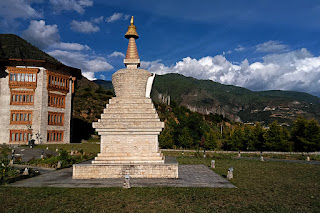Our Prime Minister was bold and said it with conviction - that if you cannot afford the increased price of petroleum to power your vehicles, take to walking. Ofcourse it was a politically insensitive thing to say - but if the perpetual grumblers ignore the facts of life, hard talk is what is called for. Unfortunately his Finance Minister was not as hard hitting - on the contrary he was rather limpid - in what he had to say to the Kuensel, with regard to the country’s depleting foreign currency reserves. The best he could do is hint at discouraging and restricting import of non-essential goods.
We keep saying that we may be missing the forest for the tree – I suspect that it is lot worst – I think the whole forest is on fire, let alone the tree.
Thus the Finance Minister should call for complete ban of imports of non-essential items such as quota cars destined for the black market, cigarettes, cosmetics, alcohol, Tulip blankets, prawns and fish, chips and wafers, canned food, shoes and sandals, clothing, crockery and cutlery etc. For God’s sakes, even toilet papers and facial tissues are imported from Bangkok and China. Talk of irresponsibility!!!
I have a feeling that there is a nexus between the import of these non-essential items and the huge dip in the inward remittances, and fall in import duty and sales tax collection. Dig a little deeper and I suspect that we will unearth a whole lot of dirt from under the carpet.
Come on DNT – be your usual bold self! BREAK THE CAUCUS!
If you have the guts to try and attempt to delink the inter-generational/cross generational Past from the Present, and Present from the Future, I know you can do this!



























